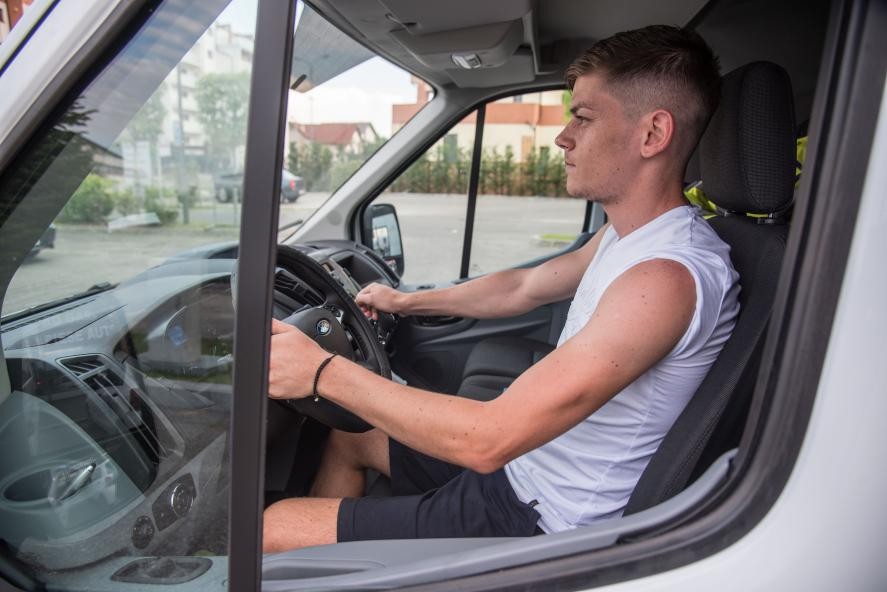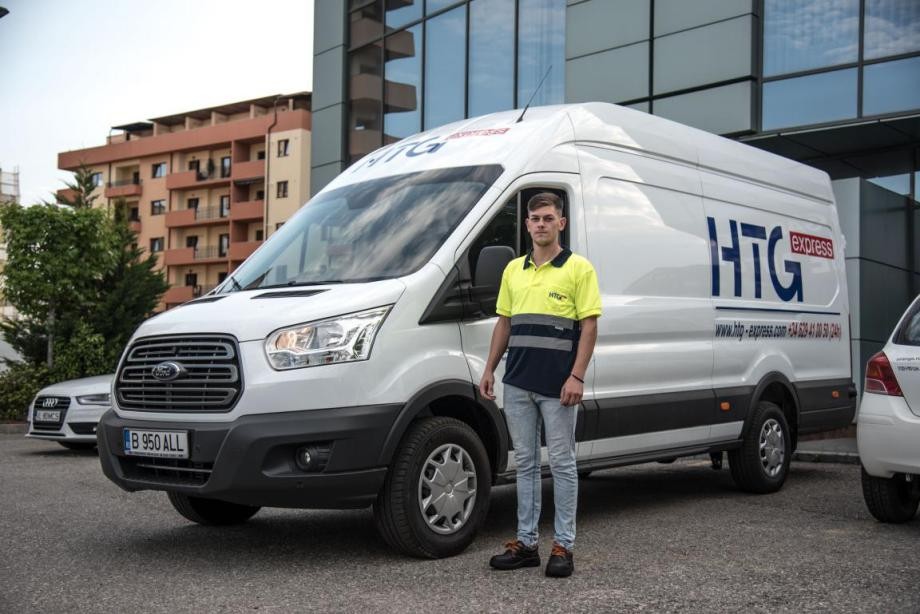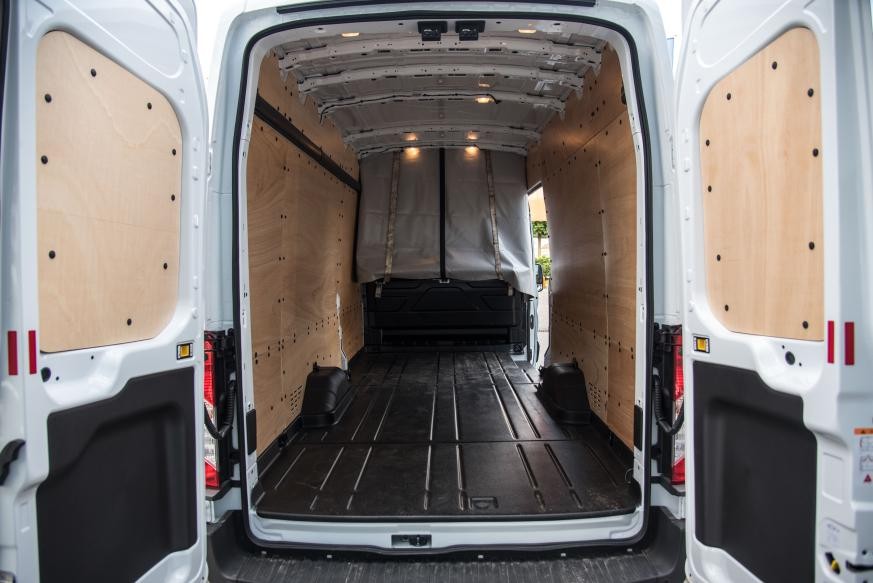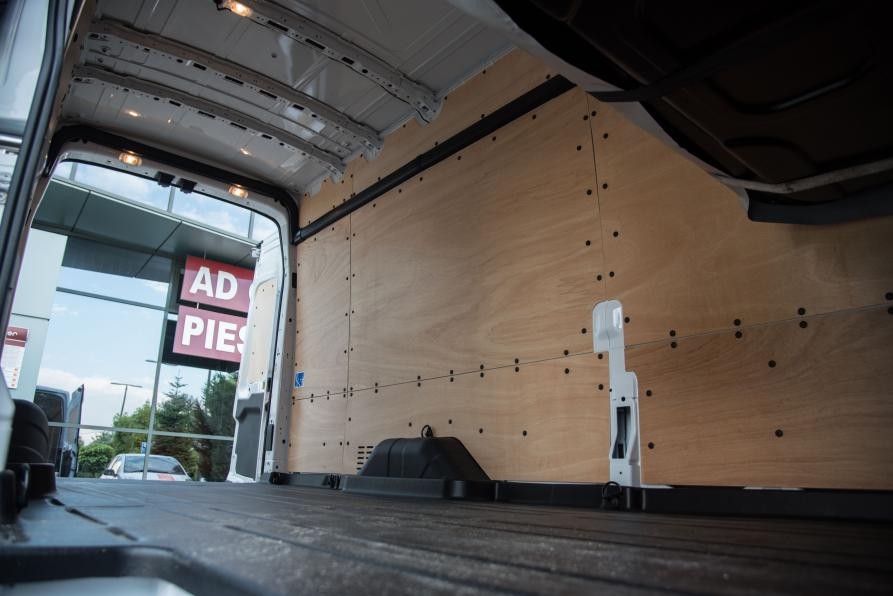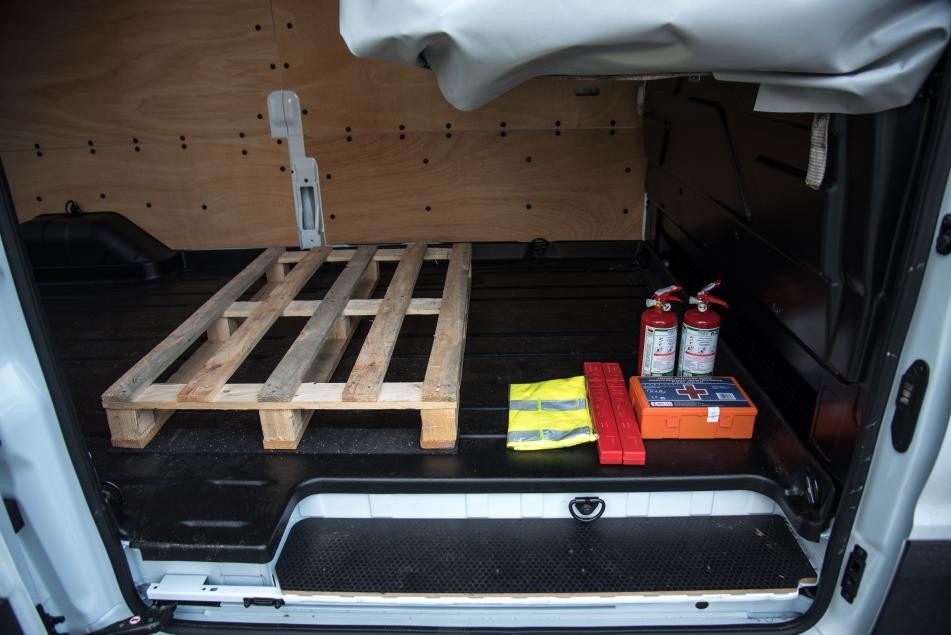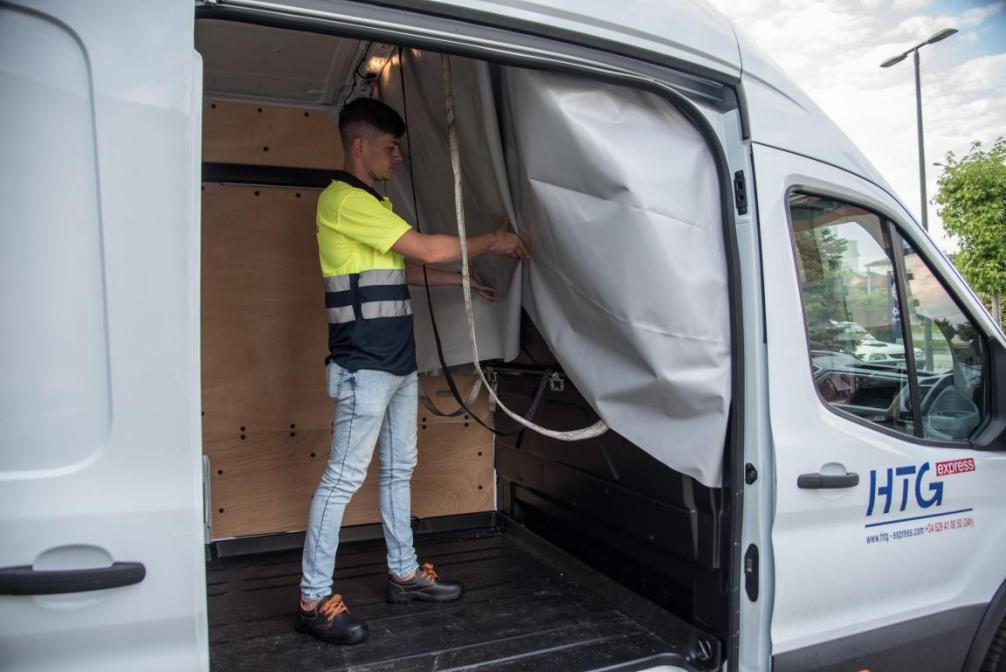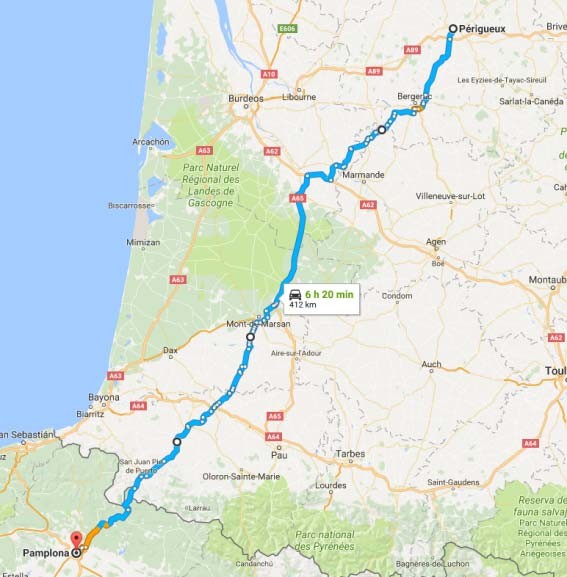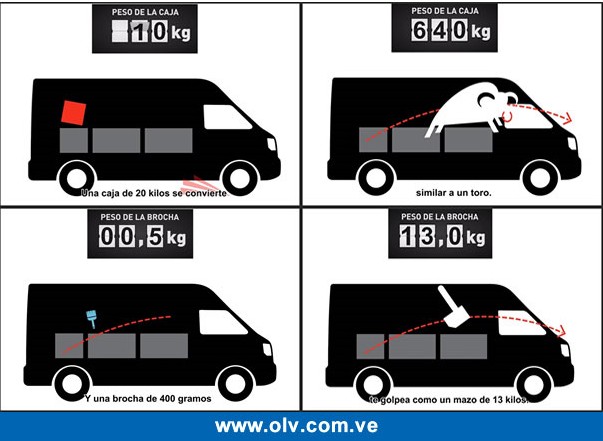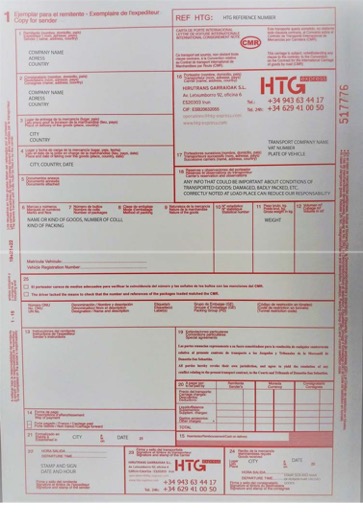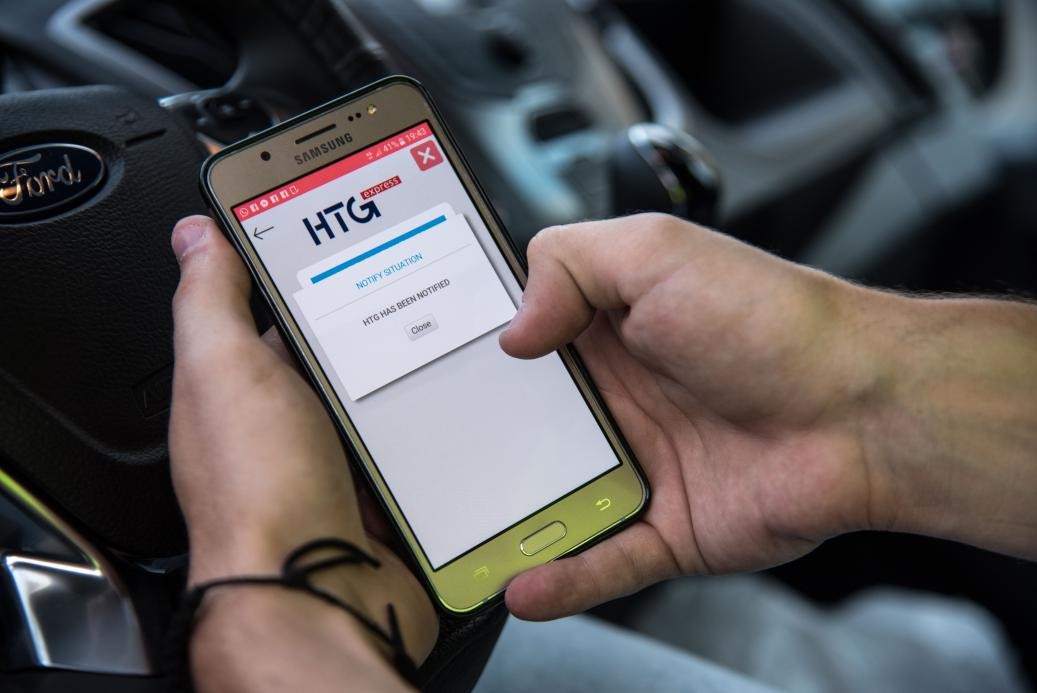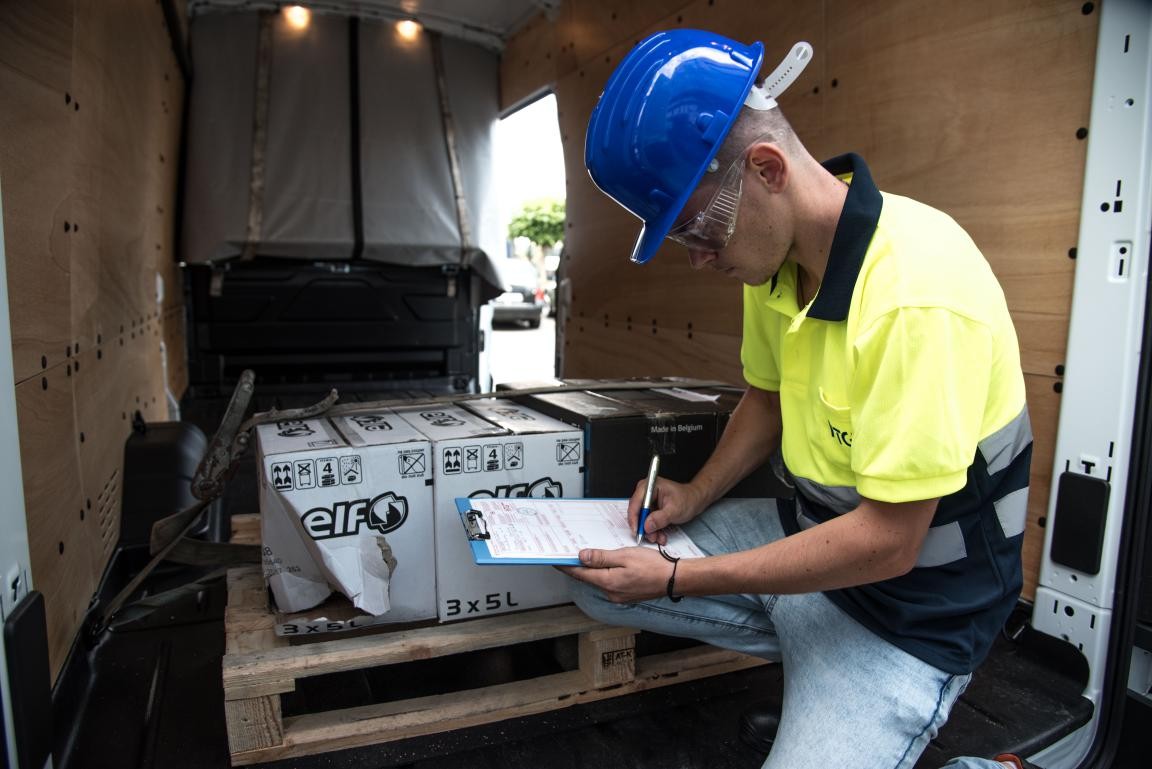
Brexit Manual
16/04/2021
FAQS app
14/06/2021INDEX
DRIVERS' HANDBOOK
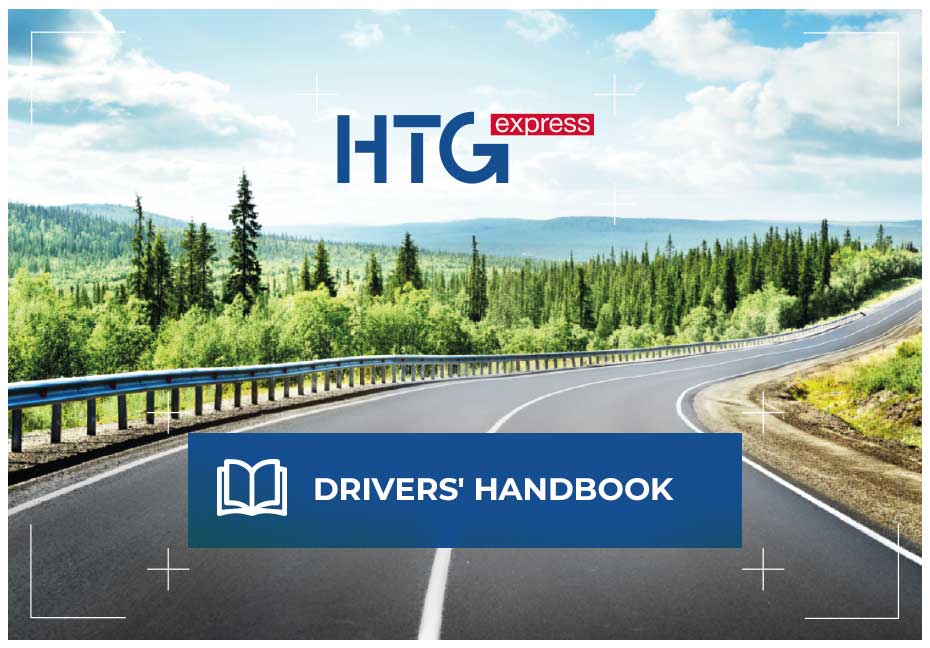
1.- Presentation of vehicle and driver at loading (LC) / unloading (LD) sites:
- Clothing: Use of appropriate clothing (NO shorts, sandals, tank tops etc.).
- Vehicle cleanliness/order: Vehicle clean and prepared for loading, personal belongings collected to facilitate loading.
- Behaviour: Always behave appropriately, providing loading/unloading details (reference, contact etc.).
- No smoking/alcohol: NO smoking on LC/LD. Never present yourself under the influence of alcohol; do not leave litter unless there is an appropriate container.
2.- Vehicle equipment:
- Smartphone: for use of the HTG Express application.
- Safety: 2kg fire extinguisher, safety clothing.
- Restraint: Straps, non-slip mats.
- Measurement: Tape measure.
- Rest: Bed that does not limit the load capacity of the vehicle.
3.- Documents on board:
- Vehicle documentation: (technical data sheet, licences, insurance, etc.).
- Driver's documentation: (A1, Macron Law, driving licence).
- Empty CMRs.
4.- Knowledge of:
- European main routes.
- Use of runways, tunnels and ferries.
- Customs procedures.
- Securing cargo; how to secure goods; spreading high loads, etc.
- Responsible and safe driving. Rest breaks.
- Correct use and completion of the CMR document.
- Use of the HTG Express app.
5.- Communication with HTG Express:
- Verification of cargo data, documents received with details of the order received.
- Verification of goods condition and information about possible damages (both LC and LD). Also during transport. Make corresponding entries in the CMR (bookings).
- Information about arrivals at LC / LD / Customs, etc.
- Immediate information on any mishap during transport (breakdowns, traffic jams etc.).
- Sending CMR photo of unloading.
Version 2021/03/04
HTG Drivers’ Handbook
1.- Presentation of vehicle and driver at loading (LC) / unloading (LD) locations:
a) Dress:
Drivers, you are our representatives to our customers. You are part of the company and our image. It is very important that, when you go to a company, you are dressed correctly, respecting safety regulations.
Even if the weather conditions are good and it is hot, we CANNOT show up at a company in flip-flops, Bermuda shorts and a tank top. The driver, as a good professional, must present himself in the HTG Express T-shirt or another short-sleeved T-shirt, clean and in good condition. Of course, he/she must also wear trousers and suitable footwear.
b) Cleanliness/Order of the vehicle
Similarly, the vehicle with which we are going to load must be clean, with all the driver’s belongings collected. The loading area must be prepared for loading.
There must be no personal belongings that impede loading or that need to be collected in LC, and no foreign odours. The vehicle must be presented at LC/LD already prepared for loading/unloading.
Customers are very demanding when hiring an express service and are annoyed when time is spent ordering or preparing the vehicle, rather than loading it directly.
c) Behaviour:
One of the most important elements when loading and unloading is the driver’s behaviour. It is essential to remain calm, speak respectfully, provide all data (reference, contact etc.) and carry the CMR prepared (with basic data).
DO NOT argue with the staff in LC /LD. As soon as there is any discrepancy, problem you must immediately call HTG Express (or your employer) informing them of the whole situation. HTG Express will try to mediate and resolve any incident that may occur. It is important that the drivers cooperate as much as possible. Remember that you represent HTG Express to the customer and we must make a good impression.
d) No smoking/alcohol:
The driver must NEVER present himself at LC /LD under the influence of alcohol or other intoxicating substances. It is strictly forbidden and may result in the termination of the collaboration with HTG Express. The driver must NOT smoke in factories/shops/stores/warehouses/where loading/unloading takes place if there are no designated places.
All rubbish must be removed to the containers provided for this purpose, never leave it on the company grounds, car park or other places.
Drivers, all those who work for HTG Express, must behave in an exemplary manner in all places (car parks, roads, etc.). It is very easy to identify our vehicles and anyone can call us to report a driver’s bad attitude (this has happened in the past).
In France, there is even a popular initiative to ban van drivers from using national roads and village car parks because of the alcohol-fuelled “parties” organised at weekends. We must all work together to change this image of our profession and to dignify our work and our professionals
.
2.- Vehicle equipment:
a) Smartphone:
As in the previous points we have talked about the importance of behaviour, clothing and cleanliness, we would also like to emphasise the equipment that the chauffeur must have on board the vehicle.
For a good collaboration with HTG Express, it is necessary that the chauffeur has a smartphone with Android that allows the use of the HTG Express app. In addition to the use of the HTG Express app, such a phone allows the driver to send photos, documents and other information that can facilitate the transport.
b) Safety:
Due to the safety requirement, each vehicle must be equipped with a minimum 2 kg fire extinguisher. Smaller extinguishers are NOT allowed, as they are not valid for loading in many places – especially in many factories in Germany.
Likewise, the driver must have full safety clothing – gloves, helmet, goggles, safety trousers and boots. It must be emphasised that these have to be boots and not shoes. The difference is that boots cover up to above the ankles and are usually more protective. Class S3 safety boots are recommended.
c) Fastening:
For the correct transport of goods you must have at least 5 straps (if van) or more, depending on the type of vehicle, to ensure that the goods travel in good condition. Old, used or worn out straps are NOT valid. On many occasions we had problems when loading, as the client did not want to do it because the driver did not have straps in good condition.
Also in the vehicle there must be a number of mats appropriate to the capacity of each vehicle (5 for van, 10 for bodywork, 16 for mini-trailer). These mats are used in loading, placing them under each pallet to increase their friction and secure the load.
d) Measurement:
As insignificant as it may seem we need the vehicle to be equipped with a tape measure. This can help us in case of any problems or discrepancies with the customer about the measurements of the goods or the vehicle itself and solve them. In the case of larger vehicles, such as Minitir, a tape measure of at least 5 metres in length is required. In the case of vehicles such as vans or bodywork, a 3-metre tape is sufficient.
e) Bedding:
The bed is one of the important elements, so that the driver can rest properly. However, it must be installed in such a way that it can be folded up and does not restrict the loading area. The driver must present himself at LC with the bed already folded in order to free up the loading area and facilitate the handling of the goods.
3.- Documents on board:
a) Vehicle documentation:
On board the vehicle the chauffeur must have all documents such as: registration certificate, insurance, technical data sheet, etc., ordered and within easy reach to be able to present them to any authority requesting them (including customers).
b) Driver’s documentation:
You must also have all the documents that justify that you comply with the minimum wage laws of each country. These documents should be neat and organised for easy viewing upon request. They must be up to date and current at all times. Failure to provide these documents may result in cancellation of the cargo by the customer.
A new version of the MyHTG website will soon be available to suppliers, where the legislation in force in the different European countries (as well as HTG Express corporate information, payment status, etc.) can be consulted.
c) CMRs:
Of course the driver must have empty CMRs to document future transports, as well as credit cards, fuel cards or enough cash to make payment for any unforeseen event or management necessary for the transport.
4.- Knowledge of:
a) Routes:
The driver must have extensive knowledge of the correct routes to use for each transport. He must have sufficient capacity to verify and choose the most optimal route that will allow him to arrive on time. You can NEVER cross from France to Spain via the Pyrenees or use III and IV class roads.
The loaded vehicle must NEVER cross Switzerland if this is not the country of loading or unloading of the goods. If at the time of receiving the loading order from HTG Express the indicated transit is not feasible with the route that the driver believes to be suitable, he must immediately contact HTG Express to clarify the situation.
b) Routing:
Route knowledge also implies knowledge of tracks, expressways and other roads, the use of which can enable the transit time to be met. It is the drivers who, due to their experience, have to know which routes are correct and most suitable for which transport.
This also applies to the use of tunnels or ferries. Drivers have to know when they should or can use the tunnel, ferry or other route. To go to England always use the Eurotunnel except if the transit time allows the use of other means, and prior notification to HTG Express.
c) Customs:
In the event that we have a transport to any country where customs clearance is required, it is the responsibility of the driver to verify that he has received all the necessary documents to make all the necessary formalities. The driver must be able to recognise that he has received invoices, DAE, T1/T2 documents and inform HTG Express immediately if any of these documents are missing.
He also has to check if he has (and knows) the addresses where he has to make customs formalities both outbound and inbound.
At origin you can start with three possibilities:
- With DAE (Documento de Acompañamiento de Exportación). With this document you can go to the last exit border of the EU. At this border you will have to go to a Customs Agent to process the documentation and issue a Transit (T1/T2). With this document you can then enter the country up to the 1st Swiss customs office where the document will be cancelled and continue to your destination for delivery. Or, if the consignee has an agent on site, he can go directly to the destination and the document will be cancelled there.
- With TRANSIT (T1/T2) directly from origin. With this document you can go to your destination, stopping only at the Swiss border to present it and have it scanned or stamped by the police. To do so, it passes through a special transit lane and there is no need for a customs agent there. Depending on the instructions given by the customer, the Transit will be cancelled at destination or at the first customs office of entry into the country.
- It is also possible that the goods leave the country of origin with only an invoice. In this case, the goods leave without customs documentation and will only go as far as the last border, where, before crossing, we will have to go to the designated customs agent, who will hand over the relevant customs documentation.
d) Cargo securing:
Drivers must have sufficient knowledge to secure the goods before starting the transport. They must know the best way to position and protect the cargo. They must also know how to position the goods in the safest way to ensure the stability of their vehicle and other traffic participants.
e) Safe Driving:
Drivers working for HTG Express must drive responsibly to ensure their safety and the safety of other road users. Drivers must take breaks (even when driving a vehicle without a tachograph!) and must give notice if they need to take a break. He must warn that he cannot take the next portage if he is tired and indicate the time he needs to recover. Of course, while driving, you must not manipulate any type of device such as GPS, telephone or others. HTG Express wants to guarantee the safety of drivers and goods.
f) Fulfilment of CMR:
The CMR is the main document used in transport. It is the basic tool and all drivers must know how to fill it in and use it.
It is very important to enter all the necessary data, as missing data can lead to a fine in any country.
The document should contain the basic data such as place of loading, unloading, goods, as well as the details of the transporter and the registration number.
g) Use of the App:
One of our main tools is our application (App) and all suppliers must use it. Whenever the supplier receives a freight order, he will receive the App code with it. This code has to be entered by the driver who is going to carry out the transport.
The app sends the position of the vehicle every time HTG Express requests it. The driver can manually change some transport statuses such as: in LC, in LD and unloaded. We are working to improve the functioning of the application, to implement new functions and to make it our main and essential tool.
5.- Communication with HTG Express:
a) Verification of data:
It is the obligation of the supplier and his driver to verify all data. They must check if the LC/LD is correct, if all data is consistent and in case they have any doubts or questions check with HTG Express.
If the driver/supplier sees that the LC is too far away from where he/she is to arrive at the loading time (without prior notice), he/she should check with HTG Express.
It is important that the driver/supplier does not rely on tools such as GPS or Google Maps. It has happened to us, on several occasions, that too much reliance on these types of devices / programmes has led to delays, loss of time and consequent customer anger.
b) Load verification:
The driver must always check the goods before loading. Any damage, defect or fault must be recorded as a RESERVATION in the CMR and reported to HTG Express. This information must be noted even if the LC/LD staff indicate that it is not necessary. As insignificant as it may seem, any information on the status of goods must be recorded. HTG Express must also be informed if for any reason (traffic, weather or anything else) the condition of the goods changes during transport. In the event of a complaint, the supplier or the driver will be held responsible if the corresponding notes have not been made. The driver may take photos of the goods after loading and before unloading and keep them for at least one week in order to be able to prove to the customer the condition of the goods during transport.
c-d) Information:
As HTG Express states in its quality commitments, the supplier MUST advise via App or other means of arrival at LC / LD or Customs. He MUST also inform about any mishap during the transport such as breakdown, jamming or other.
d) Advise HTG Express about the difficulties:
In case the directions are not clear and the driver cannot find LC / LD, you should not waste more than 15-20 min. and advise HTG Express about the difficulties you have in finding each location. HTG Express will assist you by contacting the customer and asking for more details.
e) Send the CMR photo:
Once the unloading is finished, the driver has to send the CMR photo to HTG Express. This photo must be of sufficient quality and centred to be readable.
Procedures to be followed during transport with HTG EXPRESS.
| Verified | |
|---|---|
| Before loading : | |
| Verify the data of the loading order (references, addresses, etc.) and set the transport route | |
| Activate the HTG Express App | |
| Prepare the vehicle for loading (clean and clear the loading area, raise the height of the vehicle to the height of the vehicle height to the height of the goods if necessary, etc.). | |
| In loading place: | |
| Maintain correct behaviour, assist the customer/loader as much as possible. | |
| Wear appropriate clothing and PPE | |
| Check the loaded goods (according to the order, no damage) – inform HTG Express in case of discrepancies – note possible reservations in the CMR | |
| Correctly secure the cargo | |
| Fill in all CMR fields | |
| After completion of loading, report HTG Express | |
| During transport: | |
| Immediately report any unforeseen events (accident, traffic, etc.). | |
| Notify HTG EXPRESS in case of any problem with the goods. | |
| Drive carefully and responsibly | |
| At unloading place: | |
| Inform HTG EXPRESS and the customer / consignee about arrival. | |
| Wear appropriate clothing and PPE | |
| Write any damage/damage to the goods as a reservation in the CMR. | |
| Inform HTG EXPRESS when unloading is complete. | |
| Send photo of CMR to HTG EXPRESS | |


